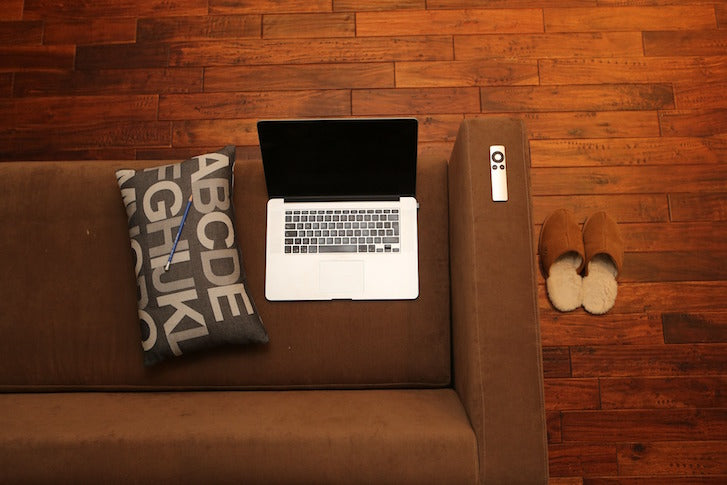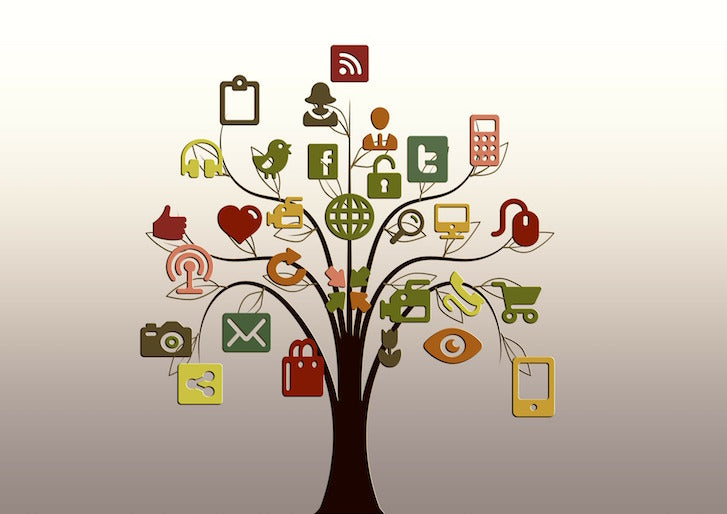I’ve been freelancing for several years now and gotten to the point where I can support myself comfortably. Compared to the vast majority of my friends and peers, who still hold down the traditional nine-to-five/salaried type jobs, freelancing seems very liberated, independent, and even luxurious.
While that’s all true, to be sure, getting to this level doesn’t just happen overnight, unfortunately. It really takes blood, sweat, and tears to achieve success – as cheesy and clichéd as that may sound – particularly since a good amount of it relies on trial and error.
Over the years, I’ve been able to identify a bunch of life hacks that have helped me shape the type of freelance career I wanted. Arriving at each was never easy, but knowing and adopting each into your freelancing routine is pure power.
Here are the 5 freelancer life hacks you’ll want to try for yourself immediately.
You might also like: Starting Your Own Web Design Company: How to Freelance, Find Clients, and Grow Your Business
1. Not just becoming more productive, but actually living productivity
 The Internet is chock-full of casual and sometimes superficial advice about becoming more productive, which is appealing to freelancers because it implies that they can get more clients, earn more money, and still have free time to pursue hobbies or spend time with family and friends.
The Internet is chock-full of casual and sometimes superficial advice about becoming more productive, which is appealing to freelancers because it implies that they can get more clients, earn more money, and still have free time to pursue hobbies or spend time with family and friends.
However, getting regurgitated advice on generically managing your time more efficiently or “getting better organized” hasn’t worked for me.
Instead, I rely on two apps to successfully live productivity: Todoist and Evernote.
Todoist is an all-powerful task manager that lets me prioritize anything I want to accomplish professionally or personally, then gives me date-and-time based reminders to ensure they get done. It’s the first thing I check every morning when I wake up.
Evernote is my all-powerful cloud storage warehouse of information; everything I’m researching for freelance gigs and marketing ambitions gets clipped and stored there. Evernote’s notebook system makes organization super-efficient, too.
Since embracing Todoist and Evernote two years ago, I’ve been able to multi-task and get amazing results; acquiring more freelance clients, providing more high-quality services to existing clients, marketing my brand, networking, and constantly learning by taking career-related courses, all while maintaining a very active personal life.
Sign up with these two services, learn how to use them well, and see yourself epitomize productivity!
2. Getting yourself a powerful, lead-generation website
 Your website is your best salesperson. That was the gist of a prescient article that appeared in Entrepreneur almost 10 years ago. That was back when Internet marketing wasn’t the gigantic industry it is today (according to TechCrunch, digital marketing is now a $50 billion industry). I’ve taken this advice to heart and it’s paid off, big time.
Your website is your best salesperson. That was the gist of a prescient article that appeared in Entrepreneur almost 10 years ago. That was back when Internet marketing wasn’t the gigantic industry it is today (according to TechCrunch, digital marketing is now a $50 billion industry). I’ve taken this advice to heart and it’s paid off, big time.
On the web, if you’re a freelancer, your website is the best way to show off your web design portfolio to leads. As a web designer or developer, your web design portfolio would include the various projects you’ve completed for clients, such as websites and apps that you’ve worked on.
Years ago, I hired a professional developer to create and maintain my website, which is today my lead-generation machine. If you don’t want to spend that much, there’s always a slew of reasonably priced, do-it-yourself website builders like Wix, Squarespace and Weebly. Of course, you can just build your own website and not spend anything if you use WordPress. It’s really a matter of how much of your own time (that could be spent on projects or networking) you want to commit to building a website.
Beyond just having a website for your portfolio of web design work, you can take it a step further and perfect your SEO to appear in Google search engine result pages for your chosen keyword or keywords. Let’s say you’re a New York-based designer or developer. Then your SEO goals would be to rank at least on the first SERP for those keywords.
To help with my SEO goals, I’ve successfully pitched myself to editors of different high-ranking publications, to get a much-coveted backlink to my site after writing a guest article or two.
If you really want to work on your freelancer brand’s marketing, this is an additional option for you.
You might also like: The Ultimate Guide to Finding Web Design Clients.
3. A dedicated home office
 Freelancers work out of their home… which is usually a place where distractions can pop up all too easily. Gotta check that social media account! Wait, the phone’s ringing, now. Or, how about that pop tart in the toaster? If your work life is riddled with the distractions of the home, then you’ll find it tough becoming a successful freelancer. Consider setting up a dedicated home office.
Freelancers work out of their home… which is usually a place where distractions can pop up all too easily. Gotta check that social media account! Wait, the phone’s ringing, now. Or, how about that pop tart in the toaster? If your work life is riddled with the distractions of the home, then you’ll find it tough becoming a successful freelancer. Consider setting up a dedicated home office.
Some freelancers I know just go with setting aside a section of their living room as a home office, but I went with converting one bedroom in my apartment into a dedicated home office. Bye, bye distractions! This “retreat” – if you will – is established for the sole purpose of moving several projects ahead and simultaneously empowers me to be super-focused, organized, and productive. As a result, I love my workflow and my production, and my clients love the high-quality services they get from me.
And just because you’re at home doesn’t mean you have to be any less professional or efficient than being in a “real” office. In fact, my home office is outfitted with all the comforts of any high-functioning office: my iMac, executive desk, ergonomically correct office chair (thanks, Humanscale!), all-in-one printer, shredder, whiteboard, halogen lamp, air purifier, and just for good measure, a recliner...for when I need to reset and take a short break.
Plus, you actually get tax benefits if you have a dedicated home office. If you’re in the U.S., you can apply for a tax deduction; if you’re in Canada (my home and native land), you can write off the business use of your home.
You might also like: My First Year as a Freelancer
4. Social media for hardcore networking
 Some folks still believe in good ol' in-person networking, which I’m all for, too. Nonetheless, you’d be surprised at how you, a freelancer, can make networking work well for you, just by using social media.
Some folks still believe in good ol' in-person networking, which I’m all for, too. Nonetheless, you’d be surprised at how you, a freelancer, can make networking work well for you, just by using social media.
Over the years, I’ve increasingly come to use LinkedIn and Twitter with greater comfort, since those two social networks have given me the best results.
My Twitter strategy depends on tweeting high-quality, relevant, and non-promotional content about my industry and expertise, seven days a week. To adopt this successful strategy, designers and developers can tweet high-value content about their web-design and coding industry, being careful to always follow the 80/20 rule, so as not to seem too pushy and over-promotional. Yes, the point of this strategy is marketing and networking, but it’s a best practice to offer real value to your followers, first and foremost.
This only takes several minutes each day, and is no trouble at all considering what I get in return; over the years, this strategy has garnered me projects, long-term work, and invitations to write proposals for companies.
I use LinkedIn differently because it works differently than Twitter. I’ve never written and shared articles with my connections (1000+) through my LinkedIn account. Instead, I’ve simply nurtured leads—old and new—by following up with them from time to time and offering insightful advice for their businesses that may have been missed. I also couch my advice with a soft sell of my services.
5. CEO time!
 Many freelancers conveniently forget that by default they’re also businesspeople, whose primary goal should be to grow their freelancing careers. At the start of my career, I too didn’t always grasp this, but as time wore on and I perfected my monthly budgeting to always land in the black, I quickly learned that being a freelancer is the same as running your own business.
Many freelancers conveniently forget that by default they’re also businesspeople, whose primary goal should be to grow their freelancing careers. At the start of my career, I too didn’t always grasp this, but as time wore on and I perfected my monthly budgeting to always land in the black, I quickly learned that being a freelancer is the same as running your own business.
To help with this, I started devoting a small part of my week to what my productivity coach calls “CEO time.” During this block of time, which is usually a quiet part of the day for me, I simply brainstorm where I want to go with my career in the future. This includes both short and long-term goals.
For instance, a short-term goal for me recently was to raise my website’s rank in the good ol’ SERPs, which means setting down my link-building plan as a way to rank higher for my specific keywords. Over time, this means more leads can find me. Hence, more clients. An example of a long-term goal is finishing a course I recently started to nail down the fine art of pitching to editors, as a way for me to write for bigger and better publications.
Designers and developers should add some CEO time to their week, too. Use it to establish a plan to get yourself working with bigger companies/clients on more interesting projects that will help you become better-known in your field.
Conclusion
Being a freelancer is enormously rewarding, both professionally and personally. You stop being a slave to someone else or a company, and you learn how to run your own business, manage your time efficiently, and market yourself, all in the effort to get bigger and better. The sky really is the limit, if you do it right!
To help get you there, these five professional-life hacks are at your disposal. Once again, they are:
- Living productivity
- Getting a website for your web design portfolio
- A dedicated home office
- Social media for hardcore networking
- CEO time!
Read more
- How to Grow From Freelancing to Founding Your Own Agency
- Designing for Designers: Jen Mussari on her Shopify Partners Mug Design
- Jeffrey Zeldman Shares His Advice for Aspiring Freelance Web Designers
- Why We’re Sending a Shopify Developer Around the World (And How You Can Connect With Her)
- 9 Noteworthy Coworking Spaces in NYC
You might also like: 10 Successful Web Designers Share Their Best Advice for Aspiring Freelancers

